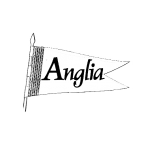The North (Mondays to Fridays)

Granada TV Network Limited is the company which, under agreement with the Independent Television Authority, provides the television programmes in the North of England from Monday to Friday.

Granada TV Centre, Quay Street, Manchester 3.
DEANSGATE 7211
36 Golden Square, London W.1.
REGent 8080
ITA Channel Vision Sound Opening Date Population ITA Homes
Transmitter Frequency Frequency 000's 000's
Mc/s Mc/s
Winter Hill 9 194.75 191.25 3rd May 1956 }
} 12,452 3,282
Emley Moor 10 199.7372 196.2605 3rd Nov 1956 }
Directors
Sidney L Bernstein*; Cecil G Bernstein*; Denis Forman*; Maurice King; Victor Peers*; John Todd; Joseph Warton*; Richard Willder.
* Executive Directors
Officers
Alex Anson (Sales and Advertising); Sir Gerald Barry (Schools and Education); Patrick Crookshank (Overseas Sales); RH Hammans (Director of Engineering); William Nugent (Chief Engineer).
Programme Committee
The Executive Directors and Harry Elton, Tim Hewat, Philip Mackie. Secretary: Kenneth Brierley.
Art and Science
Granada has endowed a Television Research Fellowship at Leeds University, a chair of Drama at Manchester University, a Chair of Communication at Keele University, and an Annual Arts Fellowship at the University of York. The Company has also made grants to repertory theatres in the North.
The Granada Guildhall Lectures
Each year Granada, with the British Association for the Advancement of Science, arranges a series of three lectures on the subject of Communication in the Modern World, with international speakers lecturing in London’s Guildhall. Television versions of the lectures are transmitted.
Research
Granada has commissioned special audience research surveys – Granada Viewership Surveys (three editions) and What Children Watch.
Overseas
Granada has interests in television stations in Canada and Nigeria.
Programme Journal
TV Times publishes a special edition for the North of England giving details of the available programmes.
Studios
THE TV CENTRE, MANCHESTER 3. Deansgate 7211. Granada’s five-acre site is an important feature on Manchester’s city development, on the City Centre ring road, near the new Courts of Justice and Government offices. In 1956, when Phase I of the TV Centre was completed, it was the first building in Britain originally designed for television. Today Phase V of the TV Centre development plan has been finished. There are six studios, floor-space totalling 23,860 sq. ft. Granada also has an audience studio at Chelsea, London.
Outside Broadcasts
Granada has 16 outside broadcast vehicles, including mobile Ampex videotape recording units.
Videotape Recording
Granada has ten Ampex videotape machines at the TV Centre, in its mobile videotape recording vehicle and at its London studios. The TV Centre has a 16-mm. Dubbing Suite for putting sound on film.
Technical Developments
Granada was the first to use a standards conversion unit to “translate” videotape recordings from European to United States line standards. In 1958 the Granada unit converted Eurovision pictures of the Coronation of Pope John to the American System, so that videotape recordings could be flown to New York for immediate transmission. Granada uses mobile videotape equipment for covering news events and recording inserts for programmes. All television facilities at the Manchester TV Centre have been planned, designed and commissioned solely by Granada Planning Engineers. The recently-completed Studio 12 is one of the most up-to-date television studios in the country. The vision mixer system, designed for the most complex operations, is controlled by one third of the buttons and switches normally needed. Half the vision is transistorised and incorporates equipment designed by Granada Design and Development. Granada studios have developed a unique system of lighting grids.
Programmes
Granada programmes include: News and News Magazines: Northern Newscast, Scene at 6.30, a daily news magazine. Talks, Discussions, Current Affairs: What the Papers Say, I Believe…, Appointment With…, election and political party conference coverage, World in Action – special reports from Granada units overseas. Past programmes have covered South Africa, India, Cuba, France and Britain. Natural History: Breakthrough, Animal Parade, Another World, A to Zoo. Schools (for sixth-formers): Discovery, Inquiry, Design, The Art of Music, Art in the Making, Patterns of Power, Word and Image. Plays and Drama Series: regular contributions to the Play of the Week and Television Playhouse series, including works of Jean Anouilh, Elizabeth Baker, Alexander Baron, Harold Brighouse, Friedrich Duerrenmatt, Clive Exton, Lillian Hellman, Stanley Houghton, Donald Howarth, Carson McCullers, Arthur Miller, Allan Monkhouse, Peter Nichols, JB Priestley, William Saroyan, Bernard Shaw, Thornton Wilder; Younger Generation series, 11 plays by new writers, performed by a repertory group of actors; the Saki series, dramatised short stories by HH Munro; de Maupassant dramatised short story series; The Victorians, plays by Victorian writers; The Verdict is Yours; Coronation Street. Light Entertainment: West End, Chelsea at Nine, Bootsie and Snudge. Music: Rosalyn Tureck playing the Bach preludes and fugues; recitals by Oistrakh, Rostropovich, the Borodin String Quartet; concerts by the New York Philharmonic Orchestra; Orpheus in the Underworld, by Sadler’s Wells Opera Company; Cinderella by the Royal Ballet Company; Josh White Sings.
 ABC TELEVISION Ltd.
ABC TELEVISION Ltd. ANGLIA TELEVISION Ltd.
ANGLIA TELEVISION Ltd. ASSOCIATED-REDIFFUSION Ltd.
ASSOCIATED-REDIFFUSION Ltd. ASSOCIATED TELEVISION Ltd.
ASSOCIATED TELEVISION Ltd. BORDER TELEVISION Ltd.
BORDER TELEVISION Ltd. CHANNEL TELEVISION Ltd.
CHANNEL TELEVISION Ltd. GRAMPIAN TELEVISION Ltd.
GRAMPIAN TELEVISION Ltd. GRANADA TV NETWORK Ltd.
GRANADA TV NETWORK Ltd. SCOTTISH TELEVISION Ltd.
SCOTTISH TELEVISION Ltd. SOUTHERN TELEVISION Ltd.
SOUTHERN TELEVISION Ltd. T W W Ltd.
T W W Ltd. TYNE TEES TELEVISION Ltd.
TYNE TEES TELEVISION Ltd. ULSTER TELEVISION Ltd.
ULSTER TELEVISION Ltd. WALES (West & North) TELEVISION Ltd.
WALES (West & North) TELEVISION Ltd. WESTWARD TELEVISION Ltd.
WESTWARD TELEVISION Ltd. INDEPENDENT TELEVISION NEWS Ltd
INDEPENDENT TELEVISION NEWS Ltd INDEPENDENT TELEVISION COMPANIES ASSOCIATION
INDEPENDENT TELEVISION COMPANIES ASSOCIATION







